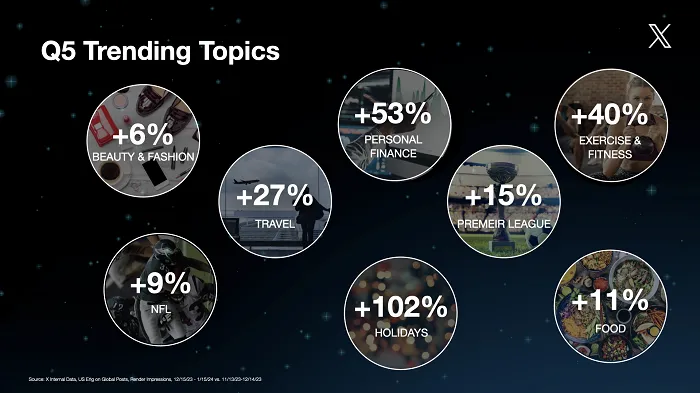
Utilizing several cloud service models has long been a regular practice for businesses. Gradually, more enterprises acquire the power of the platform as a service (PaaS), infrastructure as a service (IaaS), and software as a service (SaaS). That’s why they can save on software and hardware required for app development or business processes.
In this blog, we discuss IaaS vs PaaS vs. SaaS models and identify their actual differences. What are their core parameters to compare? They include usage, main characteristics, benefits, and limitations.
What Does Mean By Cloud Computing?
Cloud computing is defined as a demanded computing service of today’s era. It is offered over the Internet on pay-as-you-go (PAYG) basis. We can say that these PaaS, IaaS, and SaaS cloud service models help store and access data and applications in remote data centers. There is no requirement to keep them on your hardware anymore.
Today, several firms replace on-premise technologies with cloud service models. This practice leads to global cloud computing market size development. From different studies, it is found that the market size may reach $625 billion by 2024. And the revenue can reach $917 billion by 2025.

Furthermore, the reasons behind the huge demand for adopting cloud services include:
- Increasing digital transformation;
- Growing penetration of mobile devices as well as the Internet;
- Raising big data consumption
Common examples of SaaS, PaaS, & IaaS
| Platform Type | Common Examples |
| IaaS | DigitalOcean, Linode, Rackspace, Amazon Web Services (AWS), Cisco Metapod, Microsoft Azure, Google Compute Engine (GCE) |
| PaaS | AWS Elastic Beanstalk, Windows Azure, Heroku, Force.com, Google App Engine, Stratos, OpenShift |
| SaaS | Google Workspace, Dropbox, Cisco WebEx, Concur, GoToMeeting |
The Cloud Service Models Demystified

Infrastructure as a Service (IaaS)
The cornerstone of cloud computing services is infrastructure as a service (IaaS). It offers virtualized computing resources on the internet. The cloud service providers deliver and handle all the necessary infrastructure components like depository, servers, and networking with IaaS. At the same time, you can have power over the applications, operating systems, and data. Here are some of the important characteristics of IaaS:
Scalability: IaaS helps you scale several resources up or down as required, ensuring that only you pay for what you utilize.
Control: You can configure, install, and handle your software and have complete authority over the operating system.
Responsibilities: You can control virtual machines, their apps, and their data storage.
Use Cases for IaaS:
- Hosting web applications and websites
- Running testing and development environments
- Disaster improvement solutions
- Complex data analytics, as well as big data processing
Benefits of IaaS cloud model
On-demand scalability. One of the most significant advantages of adopting the IaaS model is that it can scale fast as per the developing business needs of your firm. IaaS vendors provide the most potent storage and networking technology to fulfill customer requirements.
Great reliability. Your infrastructure will not be affected by losing an internet connection or failure of specific hardware components. As a rule, IaaS vendors disperse the system’s workload across different data servers and centers. That’s why hardware, computing resources, and cloud-based applications will always be available.
Operational flexibility. IaaS helps your team access the computing power, hardware, and apps utilized frequently. Because of the usage, they can witness the needed data and files on the go anytime.
Disaster recovery (DR) and business continuity (BC). Maximum DR plans are costly and bulky. Usually, an organization has separate DR and BC plans for each branch. However, IaaS integrates DR and BC in their service plans. A firm can depend on them in case of a disaster, reducing costs and manageability and saving business.
Limitations of IaaS
Problems with legacy systems. In the cloud, it is achievable to run legacy apps. However, the infrastructure is not designed to secure such kinds of applications. This compels you to boost your applications before you shift them to the cloud.
Internal training is a must. With IaaS, you will handle backups, data security, and business continuity. For this, the team needs to learn how to manage new infrastructure. Otherwise, the managing and monitoring process can become more complicated.
Lack of flexibility. IaaS vendors maintain and upgrade both cloud-based software as well as hardware. Productivity and efficacy will be compromised if your services are not regularly updated.
Data security issues. IaaS allows you to control data, applications, middleware, and OS platforms. But you can’t monitor the communication security between virtual machines and infrastructure. You need to be dependent on the security measures that your IaaS provider gives.
Platform as a Service (PaaS)
In cloud computing, the next level is abstracting the basic infrastructure to build a complete dedicated platform for the deployment and development of applications. And it is done by platform as a service (PaaS). With this, cloud providers can handle everything, starting from infrastructure to the runtime environment. This makes you free from operational concerns. Here are a few important characteristics of PaaS:
Improvement Focus: PaaS is designed for developers to help them concentrate on coding and developing applications instead of handling infrastructure.
Productivity Tools: Mostly, PaaS combined database, development tools, and middleware, modifying the process of development.
Responsibilities: Your important responsibility is building and managing the apps, while the underlying platform’s concern is taking care of the cloud provider.
Use Cases for PaaS:
- Fast development and deployment application
- Mobile and web app development
- Cooperative software development
Benefits of PaaS
Cost-effectiveness. With PaaS cloud-based models, there is no requirement to build an application from the start. That’s why it is good to have an option if you have fewer resources or want to decrease operating expenses.
Quick launch. Pre-established backend infrastructure helps fast development and prototyping. So you are able to release your application rapidly. This early launching boosts your success chances.
They have reduced development time. PaaS vendors provide access to several frameworks, libraries, templates, and other tools. All those enable you to simplify and speed up the complete development process.
Fast testing and deployment. With PaaS, you can access several configurations and machines to test your application. This gives a good opportunity to test the performance and compatibility of your applications.
Limitations of PaaS
Runtime problems. A few times, PaaS models are not made for different programming languages and frameworks that you want to apply. Also, you can face the unavailability of a specific framework issue with PaaS.
Changes from the vendor. You may face problems because of the changes in the architecture made by the PaaS vendors. Let’s take an example. Imagine you are working with Python language, and it is very much compatible with your cloud solution. Suddenly, the PaaS provider has an update that needs Ruby for further compatibility. Now, you have two options: change the PaaS provider or the programming language.
Customization requirement for legacy systems. If you have legacy services or applications, they are not working fine with PaaS products. To fix this problem, you must invest heavily in configuration and customization changes.
Limitations for operational capability. Tailor-made cloud operations have automated workflow management that might not go with PaaS solutions. That’s why functional options may be constricted for your end users.
Software as a Service (SaaS)
The easier and the most user-friendly cloud service model is Software as a Service (SaaS). It provides ready-to-use software applications reachable through the Internet. Everything is managed by the SaaS provider, starting from applications and infrastructure to security and updates. Here are some of the essential characteristics of SaaS.
Easy Use: Applications of SaaS are accessible through different web browsers, needing no maintenance or installation on the user’s part.
Automatic Updates: The SaaS provider continuously updates the product’s patch, ensuring users can access the latest features and security fixes.
Use Cases for SaaS:
- Email and communication tool
- Customer Relationship Management (CRM) software
- Productivity tools like Google Workspace or Microsoft Office 365
- Collaboration and project management software
Benefits of the SaaS models
Cost reduction. SaaS vendors have the responsibility to handle potential technical problems. They deal with servers, data, and storage networking. Also, they offer services like compliance, maintenance, and security services to users. This way, you can cut down your expenses.
Time-saving. There is no need to install or download software products on single devices. Because of this, the technical staff are free from tedious tasks like upgrading or installing the software.
Accessibility. You can access SaaS applications easily. Only you require a mobile or computer or any smart electronic appliance like a tablet with an internet connection.
Off-the-shelf solutions. SaaS vendors provide unexpected products that are effortless to set up and use.
Limitations of the SaaS model
Performance issues. In remote data centers, applications dependent on the Internet may show poor performance. You should invest in a fast and reliable internet connection to avoid this.
Lack of sufficient data security. This is one of the biggest reasons organizations don’t want to adopt SaaS. That’s why access management become more critical for you. Consider this fact before giving your sensitive information to a third-party service provider.
Lack of integration support. A few SaaS products must be added with other applications and tools your company utilizes. So, you will automate your business’s workflow and boost your employees’ productivity. In this regard, SaaS vendors can give you limited support. Thus, you will need to invest internal resources to handle these integrations.
Making the Right Choice
The selection between Infrastructure as a Service (IaaS), Platform as a Service (PaaS), and Software as a Service (SaaS) is not one-size-fits-all. Every Cloud Service Model serves particular requirements and comes with its own benefits and limitations. You should first analyze your company’s needs to make the proper selection. You can also opt for a combination of these models to fulfill your diverse requirements efficiently.

Also, it is vital to stay informed regarding industry trends and changes happening in cloud technology. Remember that cloud service providers are continuously updating their services and offerings, which can affect your decision. Frequently reassess your cloud’s strategy to ensure that it aligns with your evolving business requirements.
Conclusion
The cloud service model you chose plays a vital role in portraying the success story of your cloud migration journey. By considering different factors like your technical skill set, business objectives, scalability, cost considerations, integration requirements, scalability, security measures, and the vendor network, you can select the perfect cloud service model that empowers your company’s growth in this digital era. Whether IaaS, PaaS, or SaaS, the cloud service model is a powerful tool that can simplify operations, drive innovation, and ensure your business remains competitive in an evolving environment.
Visit www.onpassive.com to get more tech updates.



























































![LinkedIn Provides Tips on How to Promote Live Events [Infographic] LinkedIn Provides Tips on How to Promote Live Events [Infographic]](https://imgproxy.divecdn.com/kA4YczoBIs8NmPBiERWa-OxzvYMz5kwjjZ6wewP8z7c/g:ce/rs:fit:770:435/Z3M6Ly9kaXZlc2l0ZS1zdG9yYWdlL2RpdmVpbWFnZS9saW5rZWRpbl9ldmVudF9hZHNfaW5mb18yLnBuZw==.webp)









